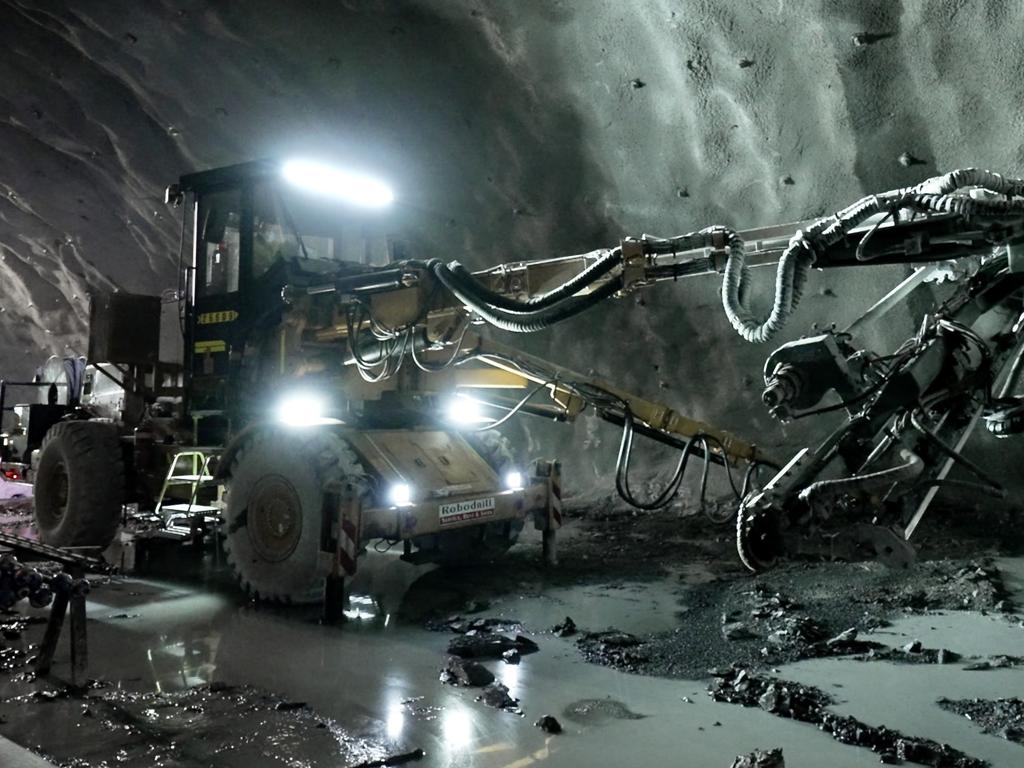Anthony Albanese to unveil a $550m plan to boost battery manufacturing
Anthony Albanese will unveil a new $550m strategy aimed at turning Australia into a ‘world-leading battery manufacturer’ as the next plank of his Made in Australia agenda.

Anthony Albanese will unveil a $550m strategy aimed at turning Australia into a “world-leading battery manufacturer”, firming up renewables to support the net zero transition and delivering new methods of powering homes and heavy industry.
With the strategy framed as the next plank of the government’s “Future Made in Australia” agenda, the Prime Minister and Industry Minister Ed Husic will on Thursday promote it as an important step towards diversifying battery supply chains.
The announcement in Brisbane comes amid a political debate over the Made in Australia plan, with the Coalition opposing the budget centrepiece of $13.7bn in production tax credits for green hydrogen and critical minerals.
Energy has dominated the week, with the government aiming to discredit Peter Dutton’s nuclear power ambitions by seizing on the latest CSIRO GenCost report showing that a large-scale nuclear plant would take at least 15 years and about $8.6bn to build.
Jim Chalmers said the report had “completely torpedoed this uncosted nuclear fantasy” and questioned where the reactors would go, including “which suburbs, which regions, which towns, which cities?”
Meanwhile warnings of blackouts over summer sounded by the Australian energy market operator have been picked-up by the Coalition, which has accused Labor of “sleepwalking towards an energy crisis”.
Warnings of blackouts over summer sounded by the Australian energy market operator have been picked-up by the Coalition, which has accused Labor of “sleepwalking towards an energy crisis”.
To meet Labor’s 82 per cent renewables target by 2030, the government’s strategy says Australia will need to expand its battery workforce and capabilities.
The Australian Energy Market Operator has forecast Australia will need 19 gigawatts of energy storage capacity in the grid by 2030, rising to 43GW by 2040, with more than half of this coming in the form of home and community batteries.
For now, the battery supply chain is highly concentrated, with 75 per cent of supply coming from China.
The government’s strategy has promised $523.2m over the next seven years to deliver production incentives for Australian battery makers and $20.3m over five years for battery research.
Mr Husic said it was critical to “ensure Australia’s economic resilience” while Mr Albanese said he wanted to “make more things here”.
“With global demand for batteries set to quadruple by 2030, Australia must be a player in this field,” the Prime Minister said.
“Batteries are a critical ingredient in Australia’s clean energy mix. Together with renewable energy, green hydrogen and critical minerals, we will meet Australia’s emission reduction targets and create a strong clean energy manufacturing industry.”
Mr Husic said batteries would be “critical infrastructure for Australia’s future, from firming up the energy grid to powering heavy industry and Aussie homes”.
“This is overwhelmingly in the national interest, especially when you add in the boost to jobs and exports,” he said.
Growing Australia’s battery manufacturing capability, lifting the downstream processing of critical minerals and producing more batteries for the transport and manufacturing industries are all proposed by the new strategy.
While Australia is a source for half of the world’s battery minerals, raw minerals make up only 4 per cent of the value of a finished battery. The new strategy seeks to capture more of the remaining 96 per cent.
With effective investment, the strategy says Australia has “all the ingredients to be a world leading battery manufacturer”.
Former competition tsar Rod Sims will on Thursday also moderate his previous criticism of the Future Made in Australia agenda in an address in Melbourne, arguing that the new national interest framework developed by Treasury had applied “sound economics” to the program.
The national interest framework identified the key sectors to be targeted by the Future Made in Australia agenda including renewable hydrogen, green metals, low carbon liquid fuels, critical minerals processing and clean energy manufacturing.
Professor Sims, the chair of the Superpower Institute, acknowledged the government was “in a way” picking winners to compensate for the lack of a carbon price.
It could not afford to fund the lack of a carbon price in all sectors, he said, so it was doing so “in the sectors it judges most require this”.
“These are sectors where Australia will have a comparative advantage in the net zero world,” Professor Sims said. “The government is picking sectoral winners, while it seems to be avoiding picking individual firms as winners.
“What was the government’s alternative? Let green hydrogen and related products in Australia compete against products made with gas or coal, with no allowance for the damage to the environment that these products cause?” he said.
Professor Sims suggested the framework outlined by Treasury now represented a “growth and productivity opportunity every bit as bold as seen under previous governments”.
He drew the comparison between green metal and iron metal and said it did not make economic sense to produce iron metal in Australia, despite the fact Australia was the leading global exporter of iron ore.
“In the coming zero carbon world, however, it makes economic sense to make green iron in Australia … because the economics flip,” he said.
“Exporting metallurgical coal raises its cost by around 10 per cent while exporting hydrogen more than doubles its cost via a complex and difficult process.
“Renewable energy should be used close to where it is produced as it is also difficult and expensive to export. All overseas studies that I am aware of suggest that Australia is likely the cheapest place in the world to make green iron. And those seeking to make green iron by importing hydrogen, those studies say, will be uncompetitive.”







To join the conversation, please log in. Don't have an account? Register
Join the conversation, you are commenting as Logout